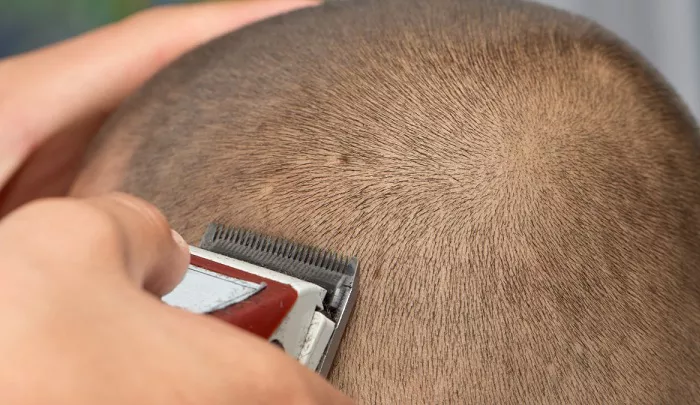Hair transplantation has become a popular solution for those dealing with hair loss. However, many patients have questions about post-operative hair care, and one of the most common inquiries is whether it is possible to shave the hair directly after a hair transplant. In this article, we will explore this topic in detail, considering various factors and providing comprehensive guidelines.
Understanding the Hair Transplant Process
A hair transplant involves the removal of hair follicles from a donor area (usually the back or sides of the head where hair is more resistant to balding) and their implantation into the recipient area where hair loss has occurred. This is a delicate surgical procedure that requires a certain amount of time for the transplanted follicles to establish themselves and start growing new hair.
The Initial Healing Phase:
Immediately after the transplant, the scalp is in a vulnerable state. There is some degree of trauma and incisions in both the donor and recipient sites. The body’s natural healing process begins, and a scab may form over the transplanted areas. This phase typically lasts for about a week or so. During this time, it is crucial to avoid any actions that could disrupt the healing, such as rubbing or scratching the scalp vigorously.
Follicle Stabilization:
The transplanted hair follicles need time to anchor themselves firmly in the recipient area. This process can take several weeks. During this period, the follicles are gradually establishing a blood supply and integrating into their new environment. Any external stress on the follicles could potentially dislodge them or affect their ability to grow healthy hair in the long term.
The Risks of Shaving Immediately After a Hair Transplant
Shaving the hair too soon after a transplant can pose several risks.
Scalp Injury:
The scalp is still tender and healing after the procedure. Shaving, especially if not done carefully, can cause cuts or abrasions. These injuries can introduce bacteria into the wound, increasing the risk of infection. An infected scalp can have serious consequences, including delayed healing, scarring, and even the potential loss of some of the transplanted follicles.
Follicle Disturbance:
The act of shaving can accidentally pull or tug on the newly transplanted follicles. Even a slight disturbance can disrupt the delicate process of follicle stabilization and integration. This could lead to a lower survival rate of the transplanted hairs and ultimately affect the overall success of the hair transplant. For example, if the razor catches on a scab or a newly implanted follicle, it could dislodge it, preventing it from growing into a healthy hair strand.
Impact on Hair Growth:
Shaving too early might also have an impact on the future growth pattern and quality of the transplanted hair. The trauma caused by shaving could affect the blood supply to the follicles or cause inflammation in the surrounding tissue. This, in turn, could result in thinner, weaker hair growth or an irregular growth pattern.
Recommended Post-Transplant Hair Care Timeline
Based on the risks involved, it is advisable to follow a specific timeline for hair care after a transplant.
First Few Weeks:
During the first 1 – 2 weeks, it is best to avoid any form of shaving. Instead, focus on gentle scalp cleansing. Use a mild, doctor-recommended shampoo and carefully wash the scalp according to the instructions provided. This helps to keep the area clean and free from debris without causing any harm to the healing follicles. Pat the scalp dry gently with a soft towel, avoiding rubbing.
3 – 4 Weeks Post-Transplant:
At this stage, the scalp is starting to heal more substantially, but it is still not the right time for a full shave. You can, however, carefully trim the longer hairs around the transplant area using blunt-tipped scissors. This helps to keep the area looking neat without putting too much stress on the scalp or the follicles. Make sure to be extremely cautious and avoid getting too close to the actual transplanted follicles.
After 4 – 6 Weeks:
Some patients may start to consider a very light shave using an electric razor with a guard. The guard helps to prevent the razor from getting too close to the scalp and reduces the risk of follicle damage. However, it is essential to consult with your hair transplant surgeon before attempting this. They can assess the progress of your healing and provide personalized advice based on your specific case.
Alternatives to Shaving and General Post-Transplant Hair Maintenance
If you are concerned about the appearance of your hair during the period when shaving is not advisable, there are alternative ways to manage your hair.
Hair Styling Products:
You can use hair styling products like gels or pomades to tame and style the longer hairs. These products can help to create a more presentable look without the need for shaving. However, make sure to choose products that are gentle on the scalp and avoid applying them directly on the transplanted follicles.
Wearing Hats or Headbands:
Another option is to wear hats or headbands. This can cover the transplant area and give you a stylish look while protecting the scalp from external elements. Choose hats made of breathable materials like cotton to prevent excessive sweating, which could also affect the healing process.
Conclusion
In conclusion, shaving your hair directly after a hair transplant is not recommended due to the risks it poses to the healing scalp and the newly transplanted follicles. It is crucial to follow a proper post-transplant hair care timeline and consult with your surgeon throughout the process. By taking these precautions and exploring alternative hair management methods, you can ensure the best possible outcome for your hair transplant and promote healthy hair growth in the long term. Remember, patience is key when it comes to post-operative care, and the short-term sacrifice of not shaving immediately will likely lead to more satisfactory results in the future.

